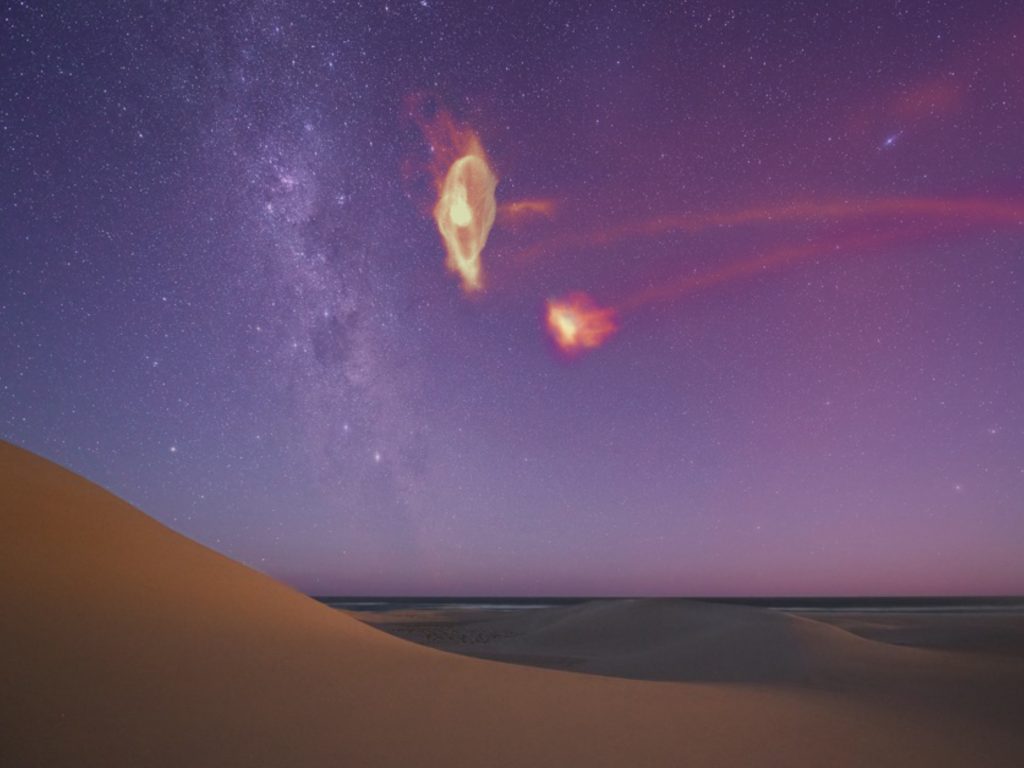Our galaxy is not alone. Swirling around the Milky Way are several smaller, dwarf galaxies — the biggest of which are the Small and Large Magellanic Clouds, visible in the night sky of the Southern Hemisphere.

During their dance around the Milky Way over billions of years, the Magellanic Clouds’ gravity has ripped from each of them an enormous arc of gas — the Magellanic Stream. The stream helps tell the history of how the Milky Way and its closest galaxies came to be and what their future looks like.
New astronomical models developed by scientists at the University of Wisconsin–Madison and the Space Telescope Science Institute recreate the birth of the Magellanic Stream over the last 3.5 billion years. Using the latest data on the structure of the gas, the researchers discovered that the stream may be five times closer to Earth than previously thought.
The findings suggest that the stream may collide with the Milky Way far sooner than expected, helping fuel new star formation in our galaxy.
“The Magellanic Stream origin has been a big mystery for the last 50 years. We proposed a new solution with our models,” says Scott Lucchini, a graduate student in physics in Elena D’Onghia’s group at UW–Madison and lead author of the paper. “The surprising part was that the models brought the stream much closer to the Milky Way.”
Lucchini, D’Onghia, and Space Telescope Science Institute scientist Andrew Fox published their findings in The Astrophysical Journal Letters on Nov. 8.
